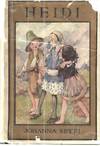![[THE FATHER OF RUSSIAN PHYSIOLOGY] Refleksy golovnogo mozga [i.e. Reflexes of the Brain]](https://d3525k1ryd2155.cloudfront.net/h/091/444/903444091.0.m.jpg)
[THE FATHER OF RUSSIAN PHYSIOLOGY] Refleksy golovnogo mozga [i.e. Reflexes of the Brain]
by Sechenov, I
- Used
- first
- Condition
- See description
- Seller
-
Tbilisi, Georgia
Payment Methods Accepted
About This Item
St. Petersburg: A. Golovachov, 1866. [4], II, 186 pp. 8vo. Contemporary quarter-leather binding. The name of the author and the book title as well as owner's initials in gilt on the spine. Owner's private stamp on the title. Some side foxing on the first seven pages of the text and on the last five. The top of the spine has been restored. Overall copy is in good condition.
Very rare.
First edition of the ground-breaking work that established the basis of the Russian School of Physiology. Ivan Mikhailovich Sechenov (1829-1905) single-handedly created this field of Russian science, by introducing electrophysiology and neurophysiology into medical laboratories.
This is one of the main works by Sechenov. Originally an article with the same name was to be printed in Sovremennik, the most influential periodical of the time, but thst was forbidden by the censor, and it was published in 1863 in the medical journal, Meditsinsky vestnik. The expanded book version, now a classic text, appeared four years later. This work marked the beginning of the era of objective physiology. Sechenov demonstrated that since reflexes cannot occur without external stimuli, physiological activity is brought about by stimuli that act on the sense organs. He made a significant contribution to our knowledge of reflexes by determining that reflexes depend not only on current stimuli but also on past influences. Sechenov believed that the retention of vestiges in the central nervous system is the basis for memory; inhibition is the mechanism for the selective control of behavior; and the operation of the amplifying mechanism of the brain is the foundation for motivation.
Ivan Pavlov, the most famous of Sechenov's pupils, called him "the father of Russian physiology".
Very rare.
First edition of the ground-breaking work that established the basis of the Russian School of Physiology. Ivan Mikhailovich Sechenov (1829-1905) single-handedly created this field of Russian science, by introducing electrophysiology and neurophysiology into medical laboratories.
This is one of the main works by Sechenov. Originally an article with the same name was to be printed in Sovremennik, the most influential periodical of the time, but thst was forbidden by the censor, and it was published in 1863 in the medical journal, Meditsinsky vestnik. The expanded book version, now a classic text, appeared four years later. This work marked the beginning of the era of objective physiology. Sechenov demonstrated that since reflexes cannot occur without external stimuli, physiological activity is brought about by stimuli that act on the sense organs. He made a significant contribution to our knowledge of reflexes by determining that reflexes depend not only on current stimuli but also on past influences. Sechenov believed that the retention of vestiges in the central nervous system is the basis for memory; inhibition is the mechanism for the selective control of behavior; and the operation of the amplifying mechanism of the brain is the foundation for motivation.
Ivan Pavlov, the most famous of Sechenov's pupils, called him "the father of Russian physiology".
Details
Terms of Sale
Bookvica
All items are subject to prior sale. All prices are net. Postage, packing, insurance and applicable sales taxes are extra.
About the Seller
Bookvica
Biblio member since 2016
Tbilisi
About Bookvica
Bookvica is an antiquarian bookseller specializing in fine books related to Russia and former USSR. We represent the wide variety of subjects: from 16th century Old Slavonic books to Soviet Samizdat. Among our primary interests are first editions of Russian classics, important travels and voyages, Avant-garde and Constructivism, translations of world classics into different ex-USSR languages, children's books, science and economics, music, Russian Americana, autographs and manuscripts. Our goal is to cover all of the aspects of Russian culture reflected in significant books from 1560s to 1990s.We participate in international book fairs as members of the International League of Antiquarian Booksellers and The Guild of Antiqurian Booksellers of Russia. As the members of these organisations we obey their Codes of Ethics.
Glossary
Some terminology that may be used in this description includes:
- First Edition
- In book collecting, the first edition is the earliest published form of a book. A book may have more than one first edition in...
- Gilt
- The decorative application of gold or gold coloring to a portion of a book on the spine, edges of the text block, or an inlay in...
- Spine
- The outer portion of a book which covers the actual binding. The spine usually faces outward when a book is placed on a shelf....
![[THE FATHER OF RUSSIAN PHYSIOLOGY] Refleksy golovnogo mozga [i.e. Reflexes of](https://d3525k1ryd2155.cloudfront.net/h/091/444/903444091.0.s.jpg)
![[THE FATHER OF RUSSIAN PHYSIOLOGY] Refleksy golovnogo mozga [i.e. Reflexes of](https://d3525k1ryd2155.cloudfront.net/h/091/444/903444091.1.s.jpg)


